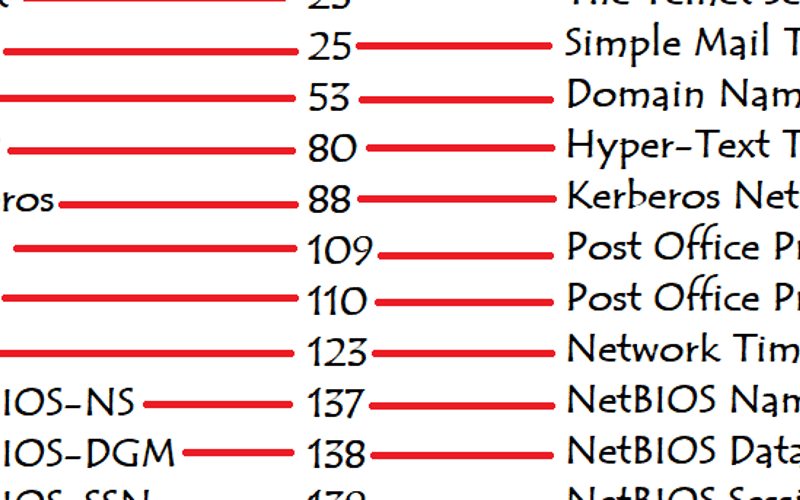Common Ports and Protocols: The Backbone of Network Communication
Understanding how data is exchanged over networks is fundamental for anyone diving into the world of computer science, cybersecurity, or IT in general. At the core of this understanding lie ports and protocols, which together form the foundation of network communication. Let’s explore what these terms mean and why they’re so crucial.
What are Ports and Protocols?
Protocols are sets of rules that dictate how data is formatted, transmitted, and received over a network. They ensure that devices can communicate with each other effectively, despite differences in hardware, software, or operating systems.
Ports, on the other hand, are virtual channels that allow different services and applications to use network resources without interfering with each other. Each port is identified by a number, ranging from 0 to 65535. Ports help organize network traffic, ensuring that data intended for a specific application is directed to the correct destination.
Common Protocols and Their Ports
TCP (Transmission Control Protocol)
HTTP (Hypertext Transfer Protocol)
- Port: 80 (HTTP) and 443 (HTTPS)
- Description: Used for transmitting web pages and other web resources on the World Wide Web.
HTTPS (HTTP Secure)
- Port: 443
- Description: HTTP over SSL/TLS, used for secure communication over the Internet.
FTP (File Transfer Protocol)
- Port: 20 (FTP Data) and 21 (FTP Control)
- Description: Used for transferring files between a client and server on a network.
SSH (Secure Shell)
- Port: 22
- Description: Provides secure access to a remote computer over a network.
SMTP (Simple Mail Transfer Protocol)
- Port: 25
- Description: Used for sending email messages between servers.
POP3 (Post Office Protocol version 3)
- Port: 110
- Description: Retrieves emails from a remote server.
IMAP (Internet Message Access Protocol)
- Port: 143
- Description: Retrieves emails from a remote server, but allows for more advanced features compared to POP3.
Telnet
- Port: 23
- Description: Provides bidirectional text-oriented communication between two networked devices.
RDP (Remote Desktop Protocol)
- Port: 3389
- Description: Allows one computer to connect to and control another computer over a network.
UDP (User Datagram Protocol)
DNS (Domain Name System)
- Port: 53
- Description: Resolves domain names to IP addresses and vice versa.
DHCP (Dynamic Host Configuration Protocol)
- Port: 67 (Server) and 68 (Client)
- Description: Used by DHCP servers to assign IP addresses and other network configuration parameters to devices on a network.
SNMP (Simple Network Management Protocol)
- Port: 161 (SNMP) and 162 (SNMP Trap)
- Description: Uses UDP for monitoring and managing network devices.
TFTP (Trivial File Transfer Protocol)
- Port: 69
- Description: UDP-based protocol used for transferring files between a client and server.
NTP (Network Time Protocol)
- Port: 123
- Description: Synchronizes the clocks of computer systems over a network.
Syslog
- Port: 514
- Description: UDP-based protocol used for sending log messages between network devices for system management and monitoring.
VoIP (Voice over Internet Protocol)
- Various ports
- Description: Commonly used for real-time voice communication over the internet due to its low latency and minimal overhead.
RIP (Routing Information Protocol)
- Port: 520
- Description: Used for exchanging routing information between routers.
The Importance of Knowing Ports and Protocols
-
Security: Understanding ports and protocols is crucial for securing a network. Many cyber attacks target specific ports, so knowing which services are running on which ports can help in implementing firewall rules and intrusion detection systems.
-
Troubleshooting: Network issues often stem from misconfigured ports or protocol settings. A solid grasp of common ports and protocols enables quicker diagnosis and resolution of connectivity problems.
-
Network Design: Efficient network design and management rely on the proper configuration of ports and protocols. This ensures optimal performance and resource allocation across the network.
Ports and protocols are fundamental to network communication, as they serve as the rules and pathways by which data can be exchanged. Whether you are a new computer scientist, an IT professional, or just someone who is curious about how the internet works, understanding these ideas is crucial. As you learn more about network technologies, this knowledge will serve as a valuable resource for helping you to navigate the digital landscape. This is just the tip of the iceberg. There are many more ports and protocols to learn about, each with a specific role in the tapestry of network communication!
Source link
lol



